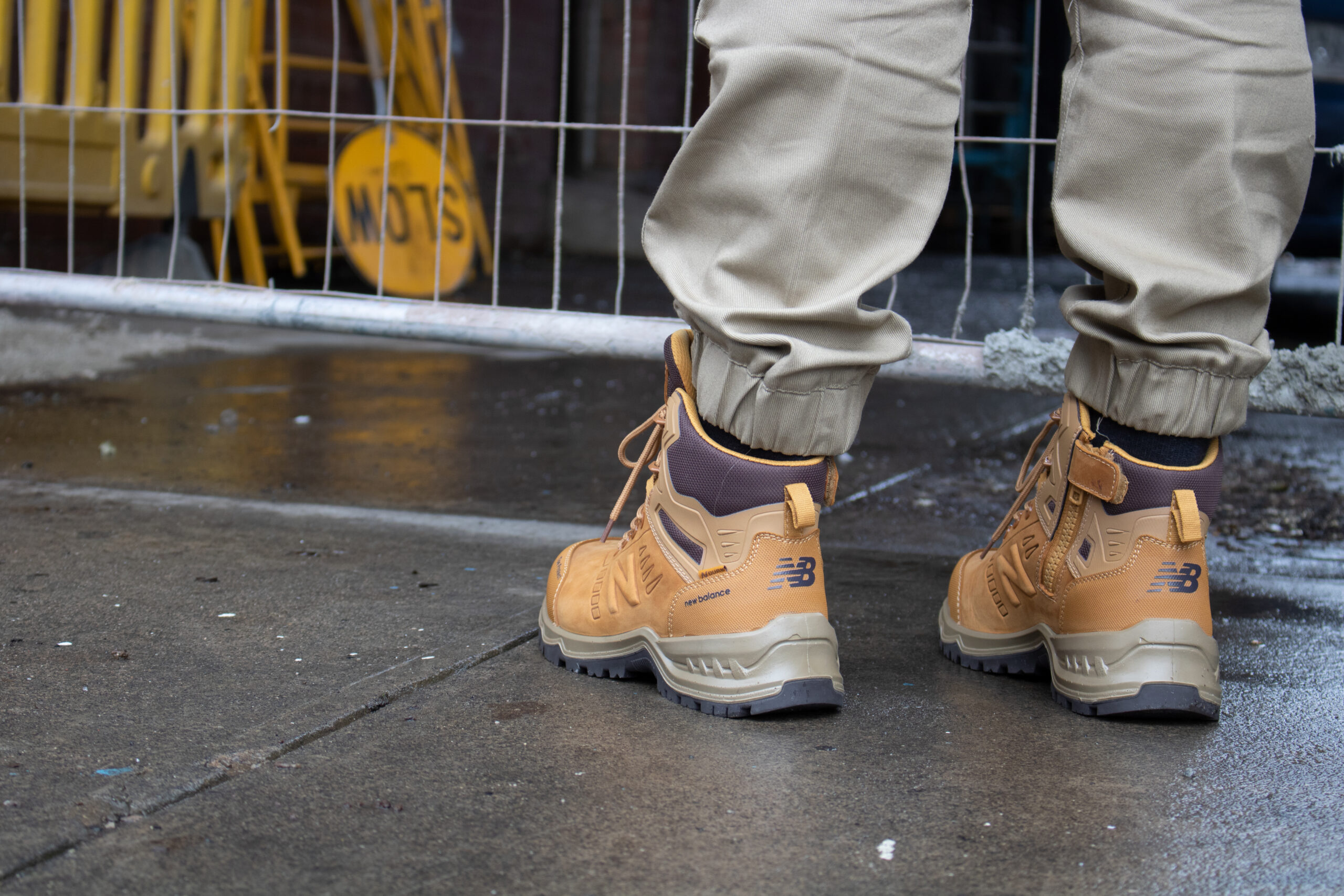
Safety Standards
An impartial and factual guide to how Safety
Footwear is classified in Europe.

An impartial and factual guide to how Safety
Footwear is classified in Europe.
The standard which our Protective footwear styles are tested to. This standard has been harmonized by Regulation (EU) 2016/425.
The standard which our Occupational footwear styles are tested to. These standards have been harmonized by Regulation (EU) 2016/425.
This standard is based upon EN ISO 20345. Our Australian product has been tested and certified to this standard.
| Category | Requirements |
|---|---|
| SB | Toe impact protection – 200 Joules Toe compression protection – 15,000 Newtons Resistance, safety and performance of materials Slip Resistance (ceramic floor and detergent) |
| S1 | SBplus
Closed heel area Energy absorption at seat region Antistatic |
| S2 | S1 plus Water penetration and absorption |
| S3 (metallic anti-perforation) S3L (non metal anti-perforation type PL) S3S (non metal anti-perforation type PS) |
S2 plus Perforation resistance according to the type Cleated outsole |
| S4 *Class II only (ie. polymer or rubber moulded construction – gumboot) |
SB plus Closed heel area Energy absorption at seat region Antistatic |
| S5 (metallic anti-perforation) S5L (non metal anti-perforation type PL) S5S (non metal anti-perforation type PS) *Class II only |
S4 plus Perforation resistance according to the type Cleated outsole |
| S6 | S2 plus Water resistance of the whole footwear |
| S7 S7L S7S |
S3 plus Water resistance of the whole footwear |
| Category | Requirements |
|---|---|
| OB | Resistance, safety and performance of materials Slip Resistance |
| O1 | OB plus Closed heel area Energy absorption at seat region Antistatic |
SRA = slip tested on ceramic tile wetted with sodium lauryl sulphate (soap solution)
SRB = slip tested on steel with glycerol
SRC = meets requirements of both SRA and SRB
Non-marked (basic requirement of SB) = slip tested on ceramic tile wetted with sodium lauryl sulphate (soap solution)
SR = slip tested on ceramic tile with glycerine
This standard is based upon EN ISO 20345. Our Australian product has been tested and certified to this standard.
Footwear offering perforation resistance shall meet one of the following requirements:
Water Penetration& Absorption: upper materials are water resistant, limit to water penetration through upper panels
Water Resistant: whole footwear is water resistant – no ‘water ingress’ (tested by flexing for 80 minutes in water)
Scuff Cap Abrasion: Scuff Cap (additional overlay material at toe) not to develop any holes before 8,000 cycles of abrasion resistance test.
Heat Resistant Outsole: Outsole is not damaged after contact with heat up to 300°C for one minute.
Fuel Oil Resistant Outsole: sole resistant to hydrocarbons
Ladder Grip: this comes from the firefighter standard EN 15090 and relates to the outsole having a minimum waist length of 35mm, 1.5mm cleat height, 10mm heel breast and heel breast angle of 90-120°.
Metatarsal Protection: the footwear incorporates a guard fitted over the top of the foot to resist impacts from falling objects behind the toe cap up to 100J impact energy
Antistatic: the footwear has an electrical resistance between 0.1 and 1,000 megaohm (MΩ). Static electricity is conducted out into the ground through theinsock, insole and outsole, helping to regulate the build-up of electrical charge.

Our ESD product has been tested to EN IEC 61340-4-3:2018 and meets the requirement as listed in EN IEC 61340-5-1:2016. As this testing is not part of EN ISO 20345/20237 the marking must sit separately so look for the ESD symbol on the outside of the tongue. ESD footwear is more conductive than Antistatic footwear and is particularly important when working with electrostatic-sensitive processes, materials or items. In many cases, devices such as wrist straps and other grounding devices are also used to control electrostatic levels.
Note: Antistatic and ESD footwear are both conductive safety shoes. They are primarily designed to protect electrical equipment by conducting the build-up of electrical charge out of the body and into the ground. Antistatic and ESD footwear arenot suitable for use on live electrical installations and will not provide an protection against electric shock from AC or DC voltages.